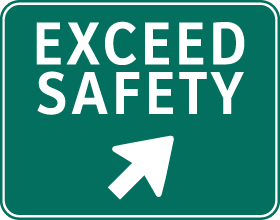Workplace safety is a critical issue, and adhering to OSHA’s reporting requirements is a fundamental aspect of ensuring a safe work environment. These regulations are designed for a timely response to serious incidents, enhancing overall workplace safety and regulatory compliance.
Key Reporting Requirements
OSHA mandates immediate reporting of work-related incidents. This includes:
- Reporting fatalities within 8 hours.
- Reporting severe injuries like amputations, loss of an eye, or in-patient hospitalizations within 24 hours.
Prompt reporting allows OSHA to take appropriate actions, potentially preventing further accidents.
Defining Reportable Incidents
A reportable incident is defined by OSHA as an event or exposure in the workplace that directly causes or contributes significantly to an employee’s injury or illness. This includes acute injuries and the aggravation of pre-existing conditions.
Detailed Recordkeeping and Documentation
Employers are required to maintain comprehensive records of all work-related injuries and illnesses. This involves using OSHA Forms 300 and 300A for logging and summarizing these incidents. In some cases, these records must be submitted electronically to OSHA, aiding in their data analysis and policy formulation.
Understanding Exemptions and Special Cases
While these reporting rules apply broadly, there are exemptions based on business size and industry. However, irrespective of these exemptions, reporting of severe injuries or fatalities is mandatory for all employers.
Reporting Process
- Incidents can be reported by calling the nearest OSHA office, using the OSHA 24-hour hotline, or through the online reporting system.
- When reporting, employers should be prepared to provide detailed information about the incident, including business name, names of affected employees, location, time, a brief incident description, and contact details.
Creating a Safety-First Culture
Compliance with OSHA’s reporting requirements is integral to fostering a culture of safety. It involves not just adhering to legal obligations but also actively working towards identifying and mitigating workplace hazards. Prompt reporting can help address immediate risks and contribute to long-term safety improvements.
Conclusion
Staying informed and compliant with OSHA’s reporting requirements is a crucial responsibility for employers. It goes beyond fulfilling legal obligations and plays a significant role in ensuring the safety and well-being of employees. Through diligent record-keeping, timely reporting, and a commitment to continuous safety improvement, employers can significantly contribute to creating safer workplaces.
Continuous Improvement and Immersive Training in Action
Construction is a dangerous business. Risks are constant, standards shift, and complacency can be deadly. For Jennifer Lastra, a U.S. Navy veteran and current CEO of 360 Immersive, corporate-style training falls far short. True safety begins with continuous improvement, supported by real engagement on the job. Training Should Go Beyond a Click-Through Box “Corporate training…
Continue Reading Continuous Improvement and Immersive Training in Action
Breaking the Cycle of Revolving Door Safety Teams
You’re in the middle of your busiest season, desperately trying to keep up with deadlines, and out of the blue, your only safety person submits their notice. Now you’re left without safety personnel, putting your workforce at risk, and potentially falling out of compliance or breaching contractual obligations. What’s your next move? Do you appoint…
Continue Reading Breaking the Cycle of Revolving Door Safety Teams
Why Does Your Company Need a Safety Team?
The construction industry is undeniably a risky one. Even for simple construction jobs, the risks posed to employees are numerous and continuously evolving. Though some companies may be hesitant to invest in a dedicated safety team, having one provides numerous benefits pertaining to employee health, hazard reduction and company culture enrichment. So let us ask…












